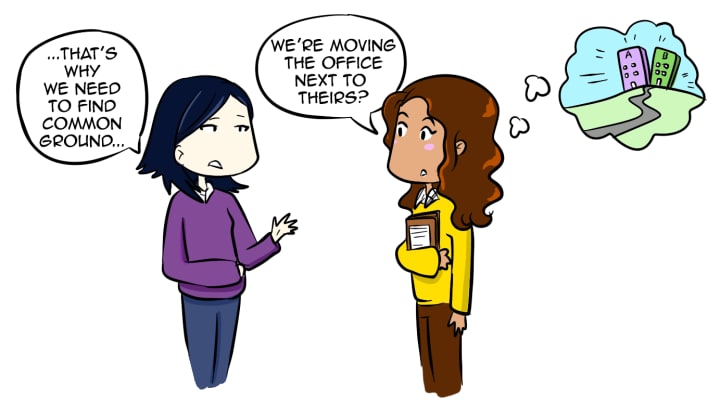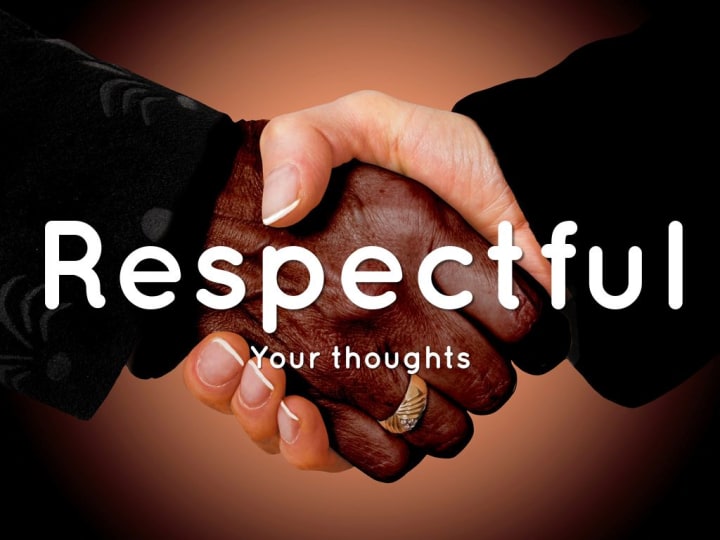How to Talk to anyone
Advanced Communication Techniques

Talking to anyone can be a daunting task, especially if you are not sure where to start. Here are some tips on how to talk to anyone:

- Be approachable
1. Make eye contact, smile, and stand/sit in an open position. This will make people feel more comfortable approaching you.
2. Use positive body language: In addition to making eye contact and smiling, you can use other forms of body language to signal that you are open to conversation. This includes uncrossing your arms, leaning in slightly, and mirroring the other person's body language.
3. Be aware of your tone: Your tone of voice can also communicate whether you are open to conversation or not. Try to speak in a friendly, welcoming tone that invites others to talk to you.
4. Dress appropriately: Dressing in a way that is appropriate for the situation can also make you more approachable. For example, if you are at a professional event, wearing business attire can make you appear more approachable than if you were dressed in casual clothes.
5. Be aware of your surroundings: Consider the environment you are in and how it might affect your approachability. For example, if you are in a noisy, crowded place, you might need to speak louder or move closer to the person you are talking to so they can hear you better.

- Start with a simple greeting
"Hi, how are you?" is a great way to start a conversation. It shows that you are interested in the other person and can lead to further discussion.
- Be sincere: When you ask someone how they are, be sincere in your interest. If you are just asking as a formality and not really listening to their response, it can come across as insincere.
2. Use their name: If you know the person's name, using it can help to establish a personal connection and make them feel valued.
3. Follow up with a question: After asking "how are you?" or a similar greeting, follow up with a question that shows you are interested in the other person. For example, "What have you been up to lately?" or "How's your day been so far?"
4. Listen actively: As I mentioned earlier, actively listening to the other person is key to having a successful conversation. This means paying attention to their responses and asking follow-up questions to show that you are interested.
- Ask open-ended question
Instead of asking yes or no questions, ask questions that require more detailed answers. For example, instead of asking "Do you like movies?" ask "What's your favorite movie?"
1. Avoid questions that can be answered with a simple "yes" or "no." Instead, ask questions that require a more detailed response. For example, instead of asking "Did you enjoy your vacation?" you could ask "What was the highlight of your vacation?"
2. Use words like "who," "what," "where," "when," "why," and "how" to prompt a more detailed response. For example, instead of asking "Did you have a good weekend?" you could ask "What did you do over the weekend?"
3. Ask follow-up questions to keep the conversation going. If the other person mentions something interesting, ask them to tell you more about it.
4. Be genuinely interested in the other person's response. Active listening and showing a genuine interest in what the other person has to say can make them feel valued and respect
- Listen actively
When someone is speaking, give them your full attention. Make eye contact, nod, and ask follow-up questions. This shows that you are interested and engaged in the conversation.

- Maintain eye contact: This shows the other person that you are paying attention to them and are interested in what they have to say.
2. Don't interrupt: Let the other person finish speaking before you respond. Interrupting can make them feel like you are not interested in what they have to say.
3. Ask clarifying questions: If you don't understand something the other person has said, ask them to clarify. This will not only help you to understand better but also show them that you are actively listening.
4. Summarize what they have said: To show that you have been actively listening, summarize what the other person has said in your own words. This can help to clarify your understanding and show them that you are engaged in the conversation.
5. Provide nonverbal feedback: Use nods, smiles, and other facial expressions to show that you are following the conversation
- Find common ground
Look for shared interests or experiences that you can talk about. This can help you establish a connection with the other person.

- Look for shared experiences: Consider your background, hobbies, interests, and experiences. Are there any that you share with the person you are talking to? This could be anything from growing up in the same town to having a love of hiking.
2. Ask questions: Ask the other person questions about their interests, hobbies, and experiences. This can help you to identify common ground and find topics of conversation that you can both relate to.
3. Listen actively: As I mentioned earlier, active listening is key to building a relationship. Listen to the other person's responses and try to find common ground based on what they say.
4. Share your own experiences: Once you've found common ground, share your own experiences and perspectives. This can help to deepen the connection and create a sense of shared understanding.
5. Be open-minded: Keep an open mind and be willing to learn about new interests and experiences. This can help you to find common ground with people who have different backgrounds or perspectives than your own.
- Avoid controversial topics
Topics like politics, religion, and money can be divisive. If you are not sure whether a topic is appropriate, it is best to avoid it.

1. Politics: Political views can be deeply personal, and people can have strong feelings about them. Discussing politics can easily lead to disagreements, which can make the conversation uncomfortable.
2. Religion: Religious beliefs are another topic that people can feel very strongly about. It's best to avoid discussing religion unless you are sure that the other person is comfortable with it.
3. Personal finances: People can be sensitive about their financial situation, so it's best to avoid asking about their income or discussing financial problems unless they bring it up themselves.
4. Sensitive personal topics: Sensitive topics like health issues, personal struggles, and family problems can be very personal and sensitive. It's best to avoid discussing them unless the other person brings them up and seems comfortable discussing them.
- Be respectful
Treat the other person with respect, even if you disagree with them. Avoid interrupting, talking over, or dismissing their opinions.

1. Be present: Give the other person your full attention, and be present in the moment. Avoid distractions like checking your phone or looking around the room.
2. Use respectful language: Use polite language and avoid using slang, curse words, or offensive language. Be aware of the other person's preferences and try to use language that they are comfortable with.
3. Be open-minded: Be willing to listen to the other person's perspective, even if it's different from your own. Be respectful of their opinions and avoid dismissing them or being dismissive of their ideas.
4. Avoid interrupting: Let the other person finish their sentences before you respond. Interrupting can be disrespectful and can make the other person feel like you are not interested in what they have to say.
5. Respect boundaries: Everyone has different boundaries and comfort levels. Be aware of the other person's boundaries and avoid crossing them. If you're not sure, ask politely.
6. Don't make assumptions: Avoid making assumptions about the other person based on their appearance or background. Treat them with respect regardless of their race, gender, religion, or sexual orientation
Remember, the key to talking to anyone is to be confident, approachable, and respectful. With practice, you will become more comfortable striking up conversations with anyone you meet.

Thank You
About the Creator
Jananan Sandajeshan
As a book reviewer and writer, I am dedicated to sharing my love of literature with others. I believe that books have the power to educate, inspire, and transform us, and I'm committed to helping readers find the stories that resonate most.






Comments
There are no comments for this story
Be the first to respond and start the conversation.